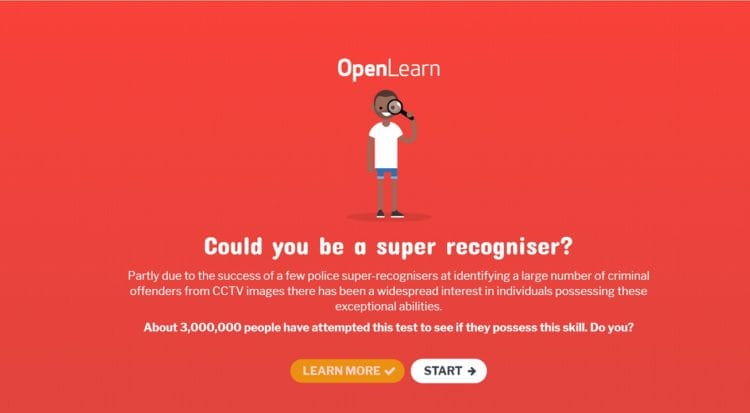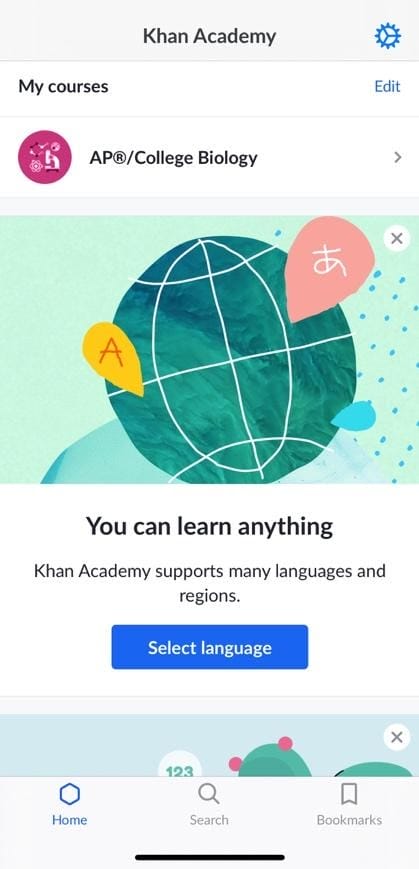
It’s officially game over for boring training materials because there’s a new player in town: gamification.
Interactive simulations, gamified challenges, learner avatars…the world of online learning is leveling up. And it’s about time.
But what is it all about, and what does it have to do with achieving your organizational learning objectives?
This guide shows you why game elements are beneficial and gives examples and tips on marrying instructional design with game design.
It’s a winning combination, so let’s get started.
What is gamification in online learning?
Gamification means adding game mechanics such as leaderboards, points, achievements, levels, and badges to online experiences.
In the context of e-learning courses and learning experience design, gamification is a fun way to engage and motivate learners by creating an interactive and rewarding environment.
A lot of people (especially younger millennials and Gen Z) are already gamers and so familiar with these elements. By adopting gamification techniques, you can appeal to what they already like.
But that’s not the only advantage. So let’s see how else implementing a gamification strategy can benefit learning in your organization.
4 benefits of gamification in e-learning
Gamification is one of the most influential trends in e-learning because it’s relatively easy to implement but yields excellent results.
So here are the main benefits you can expect if you add e-learning gamification to your corporate training programs.
Benefit #1: Fosters active learning
Learner engagement is crucial to achieving positive learning outcomes. However, as anyone who’s ever taught a class knows, this can be a tall order.
Gamification gives learners many opportunities to actively engage with the material. Instead of passively going through the motions, learners interact with the content and with each other, which immerses them deeply in the learning process.
This is especially true if you include quizzes and other game-based learning activities that let learners test their knowledge and receive instant feedback. The added benefit is a boost in knowledge retention too!
Benefit #2: Makes learning more fun
Learning motivation is a tough nut to crack. There’s always natural apprehension when people need to start learning unfamiliar skills.
And, since we’re talking about employee training here, we have to consider that your learners also have their usual workload in addition to the training sessions.
Even if the stakes for passing and failing are high (such as in compliance training), gamification elements can ease pressure and nudge learners into giving it their best shot.
Benefit #3: Creates better learning environments
As a study discovered in 2002 (21 years old, but it’s science 🤓), a relaxed learning environment makes training more accessible and practical.
And it’s an all-encompassing effect — it works on schoolchildren and in higher education. Therefore, we can conclude it will also work for adult learners in your company’s learning and development programs.
To put it simply, games are fun, and they provide a sense of enjoyment and joy. Plus, badges and points recognize learners’ hard work and give them that all-important dopamine hit.
Opting for an e-learning platform with gamification functionality can support you in creating a relaxed and enjoyable learning environment.
Benefit #4: Increases productivity
Learning programs that take advantage of gamification have a real-life effect on productivity.
Engaged learners go through training content faster and remember more. This means they’ll have more time to devote to their main work obligations.
Using a learning management system with gamification features makes learning more productive too.
Instead of watching long video lectures or reading pages and pages of material, learners can complete short quizzes and interactive exercises or simulations at their own speed.
Thanks to mobile learning and microlearning, employees can comfortably fit learning around their busy schedules.
Next, we’ll discuss some real-world examples of gamification in online learning.
3 examples of gamification in online learning
Gamification is already a major component in employee training programs across the globe.
As a result, there are some excellent platforms and mobile apps on the market that take learning to the next level.
Here are a few examples.
Example #1: Duolingo’s gamified approach to learning a new language
Duolingo is a well-known online language-learning app that lets users discover new languages for free.
Image Source: Duolingo
It’s also one of the best examples of gamification in e-learning. The whole platform relies on gamification to help learners achieve the desired learning outcome.
On Duolingo, you can select the pace of learning and unlock new levels each day that take you further in the learning experience.
The app limits learners to only clearing one level per day, thus encouraging them to come back. When learners return day after day, they achieve streaks that help build discipline and consistency.
Duolingo also connects to Facebook, allowing social media network users to compete against each other.
As they advance, learners earn “lingots,” the in-game currency that they can use to purchase items and outfits for the digital avatar (and site mascot) Duo.
Example #2: Open University’s competitive timed quiz
Open University provides an example of gamification that’s both fun and academically useful.
Image Source: Open University
It turns out that some people are so-called “super-recognizers”, meaning they can recognize many faces quickly.
The test challenges people to see if they are one of this rare breed. Through a series of tasks of increasing difficulty, those who take the test compare their abilities against the 3 million people who have already completed it.
In a clever design choice, the test gives no feedback until it is completed. This triggers the takers’ intrinsic motivation to get to the end and see if they qualify for the title of super-recognizer.
Example #3: Khan Academy’s mastery points
Khan Academy is an online learning platform where students can find free courses on various subjects.
Image Source: Khan Academy
Khan Academy uses gamification to support learners and provide a more engaging learning experience.
When users select a course to take, they are assigned mastery points for each section of the course.
As learners progress through each section, they earn more and more mastery points.
It’s a relatively simple implementation of gamification that achieves two main goals:
- It motivates learners with numbers going up as they learn more.
- It gives a numerical overview of the learners’ progress.
Together, this engages learners and makes learning more fun.
6 tips for gamifying your online courses
With gamification being so valuable, you’re no doubt wondering how to implement it in your online learning environment.
Here are some tips on how to do just that.
Tip #1: Focus on engagement and motivation
Think of your learners like players on a journey from novice to master.
That is what makes games engaging — and sometimes addictive!
Build your online learning in a way that encourages learners to strive to reach the next stage.
Here are some ideas that work well:
- Present a series of small, achievable challenges to reach an overall goal.
- Use quests to engage and motivate. Start with a simple question or quiz.
- Allow users to learn from their mistakes. Provide clear feedback that shows learners where they went wrong and gives them a chance to try again, keeping them motivated to continue learning.
- Use video and audio content to engage learners.
Tip #2: Make it a challenge
A series of incremental challenges maintains the motivation to improve skills and knowledge.
Make challenges achievable and provide feedback and branching navigation to keep the course relevant and engaging.
Here’s an example of a simple but effective mini-course built with Elucidat.
Image Source: Elucidat
In Preventing Fraud, learners jump to the next course stage if they respond correctly to a challenge.
Learners take different twists and turns until they reach the desired outcome. The game sets a score and adds rules to allow learners to move through the course.
Let’s look at another example that makes learning a challenge. The interactive historical game Medieval Swansea has learners take on the role of a detective to solve a mystery.
Image Source: Medieval Swansea
Learners complete challenges to unlock stages. Some of the successful gamification features include:
- Scenario learning: learners complete interactive challenges and quests.
- Storytelling: narrates the different stages.
- Progression: a dynamic map shows players/learners what stage they are at and what’s left to complete.
- Dynamic polling: players vote on solving the mystery and see what other players say.
- Challenging: opportunities to gather points and bonuses unlock future stages.
So, when you make gamified courses, ensure there’s a fundamental element of challenge. Otherwise, it won’t be engaging because getting points and badges will be too easy.
Tip #3: Create a sense of accomplishment
Affirm learners’ progress with tests and scores. Once learners pass a test or a level, reward them.
Badges can be awarded to learners who have completed stages in a program.
Achievement rewards can also be used to unlock levels in your course or in compliance training to demonstrate the workforce’s competence in a particular area.
With Docebo, you can easily add gamification elements to your courses. Points, badges, leaderboards, and contests let you engage and recognize learners through a built-in reward marketplace.
Tip #4: Emphasize learning rather than the game
Points, badges, and other gamification elements only work if they serve the learning objectives.
This means you have to think of the learning objectives first and the gamification elements second. Elements like points and badges are only meaningful if your online course or learning program has clear goals.
It’s best practice to tie the gamified elements with behaviors and performance. One strategy is to allow learners to get points quickly (even for actions like completing a profile and sharing the course with others) but make badges more meaningful.
That is to say, only give out badges when a learner demonstrates knowledge or competency with a skill or the learning material.
Tip #5: Use visual aids to make the content more engaging
Gamification is a tool to engage learners, but you shouldn’t stop there. Visual aids like images, illustrations, and an attractive user interface also amp up engagement.
From simple things like using illustrations to explain a concept to more involved strategies like designing an interactive quiz, adding visual elements makes online learning more fun and engaging.
Think about creating “visual hooks” for each gamification element. Don’t just have learners access a quiz in a drop-down menu — make it a clickable illustration with a motif based on the subject matter.
Enlist the help of your resident design team to create fun and visually attractive badges that clearly represent the unlocked achievement.
Generally, gamification and visual design work well together. So, if you want maximum engagement, don’t neglect either one.
Tip #6: Mix gamification with social learning
Another lesson L&D professionals can learn from video games is the impact of social interactions on long-term engagement and motivation.
Think of popular online games like Fortnite or Among Us. Why do gamers log on each day? Partly because of the joy of the game, the levels, and unlocking new gear, but also because of the rich social interaction these games provide.
Luckily, with modern learning management systems like Docebo, adding social interactions to learning programs is easy.
Learners can communicate in forums and chat rooms to share their achievements.
Combining social learning and gamification is a powerful way to make learning fun and engaging.
Gamify your next online course using the right LMS
Gamification engages learners, which translates into better knowledge retention and more learning motivation.
All you need to gamify your online learning courses is a stellar strategy and an LMS like Docebo. It comes with all the necessary features, such as points, badges, leaderboards, and contests.
To see it in action, simply schedule a demo today!





